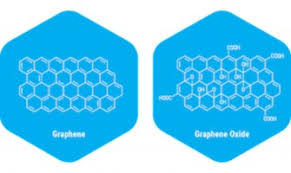
Reasons Why Graphene Oxide Is Leading the Graphene Industry
Graphene oxide (GO) has emerged as a front-runner in the graphene industry due to its versatility, ease of production, and broad range of applications. Unlike pure graphene, which requires complex and costly production methods, graphene oxide offers a more accessible and scalable alternative while maintaining many of graphene’s extraordinary properties. Its unique characteristics have positioned it as a key material driving innovation across various fields.
What is Graphene Oxide?
Graphene oxide is a derivative of graphene, consisting of a single layer of carbon atoms functionalized with oxygen-containing groups. These groups make GO dispersible in water and other solvents, a property not shared by pristine graphene. This solubility and chemical reactivity make GO easier to process and integrate into a wide range of materials and technologies.
Advantages of Graphene Oxide
- Ease of Production:
- GO can be produced through cost-effective chemical exfoliation methods, using graphite as a raw material. This scalability reduces production costs compared to pristine graphene.
- Water Dispersibility:
- Unlike pure graphene, GO’s hydrophilic nature allows for easier processing and integration into composites and coatings.
- Chemical Versatility:
- Functional groups on GO enable chemical modifications, allowing tailored properties for specific applications.
- Compatibility:
- GO can be combined with polymers, metals, and other materials to create high-performance composites with enhanced properties.
- Cost Efficiency:
- Lower production costs make GO more accessible for industrial applications, driving broader adoption in various sectors.
Applications of Graphene Oxide
- Energy Storage:
- GO is widely used in batteries and supercapacitors, where it enhances charge storage capacity and cycling stability.
- Water Purification:
- GO membranes are highly effective in desalination and removing contaminants, offering sustainable solutions for clean water.
- Medical Applications:
- GO is used in drug delivery systems, biosensors, and antibacterial coatings due to its biocompatibility and functional versatility.
- Electronics:
- Thin films of GO are applied in flexible electronics, transparent conductive films, and sensors.
- Composites:
- GO-reinforced composites exhibit superior mechanical strength, thermal conductivity, and lightweight properties, making them ideal for aerospace and automotive industries.
- Coatings and Paints:
- GO-based coatings provide anti-corrosion, anti-fouling, and self-cleaning properties, enhancing the durability of surfaces.
Why Graphene Oxide Outpaces Pristine Graphene
- Scalability:
- The production of pristine graphene at industrial scales remains challenging, while GO production methods are well-established and cost-effective.
- Processing Flexibility:
- GO’s solubility and chemical reactivity simplify its integration into various manufacturing processes.
- Broader Applications:
- Functional groups on GO make it suitable for applications requiring surface interactions, such as water treatment and drug delivery.
- Affordability:
- Lower costs make GO more attractive for industries looking to adopt graphene-based technologies.
Challenges in Graphene Oxide Applications
- Reduction to Graphene:
- Converting GO back to reduced graphene oxide (rGO) to achieve properties closer to pristine graphene can introduce defects, impacting performance.
- Material Stability:
- GO’s chemical reactivity may lead to degradation under certain conditions, requiring careful handling.
- Standardization:
- Variability in GO quality and properties across production batches can affect consistency in applications.
Future of Graphene Oxide
- Advanced Composites:
- Research is focused on creating next-generation composites with GO for lightweight, high-strength applications.
- Renewable Energy:
- GO’s role in improving the efficiency of solar cells and energy storage devices is a growing area of interest.
- Healthcare Innovations:
- Functionalized GO is being explored for cancer therapies, advanced drug delivery systems, and bioimaging.
- Sustainability:
- GO-based materials are increasingly seen as sustainable alternatives for water purification, energy solutions, and green manufacturing.
- Scalable Production:
- Efforts are underway to standardize GO production methods and improve scalability for industrial applications.
Conclusion
Graphene oxide is leading the graphene industry by addressing the scalability and application challenges associated with pristine graphene. Its unique properties, ease of production, and broad application potential make it a cornerstone material for future innovations. As research and technology advance, graphene oxide is poised to unlock new possibilities in energy, healthcare, environmental sustainability, and beyond.
